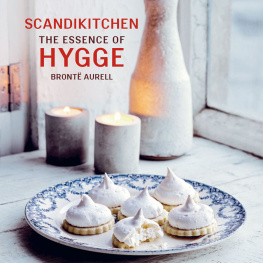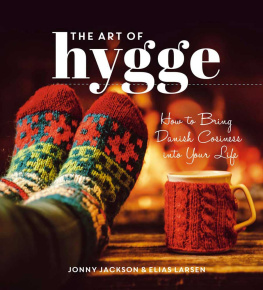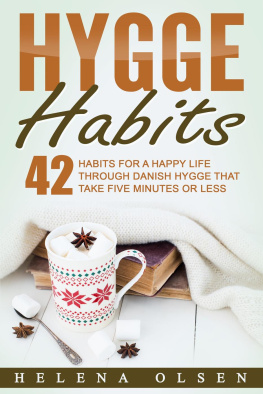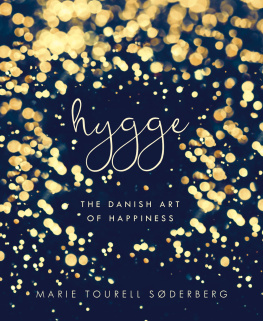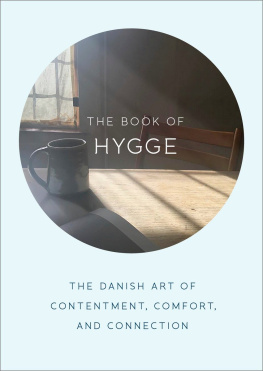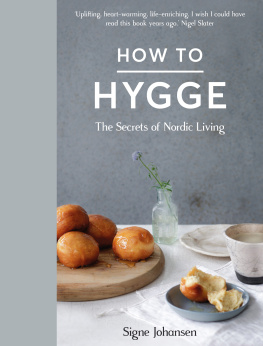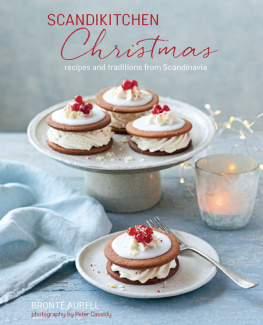SCANDIKITCHEN
THE ESSENCE OF
HYGGE
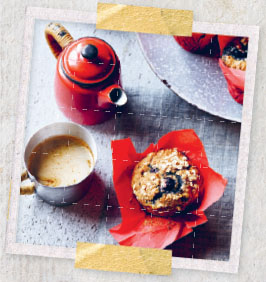
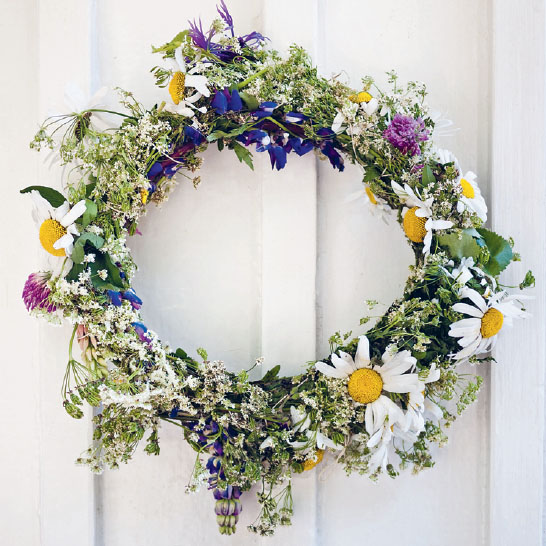
SCANDIKITCHEN
THE ESSENCE OF
HYGGE
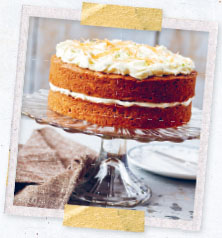
BRONT AURELL

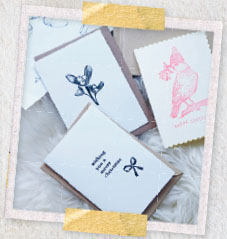
Designer Emily Breen
Editor Miriam Catley
Production Mai-Ling Collyer
Art director Leslie Harrington
Editorial director Julia Charles
Publisher Cindy Richards
With photography by Peter Cassidy
First published in 2017 by Ryland Peters & Small 2021 Jockeys Fields, London WC1R 4BW and 341 E 116th St, New York NY 10029
www.rylandpeters.com
10 9 8 7 6 5 4 3 2 1
Text copyright Bront Aurell 2017
Design and photographs copyright
Ryland Peters & Small 2017
ISBN: 978-1-84975-874-1
eISBN: 978-1-78879-005-5
Printed in China
The authors moral rights have been asserted. All rights reserved. No part of this publication may be reproduced, stored in a retrieval system or transmitted in any form or by any means, electronic, mechanical, photocopying or otherwise, without the prior permission of the publisher.
A CIP record for this book is available from the British Library.
US Library of Congress Cataloging-in-Publication Data has been applied for.
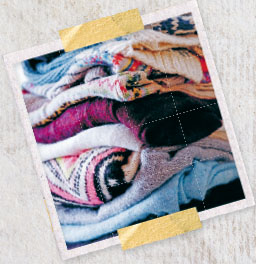
CONTENTS
A little over a year ago, the word hygge first entered the English language. Obscure and unpronounceable, it was initially ignored and left in the corner, while people wondered what on earth it was, what to do with it and why anyone bothered taking it out of Scandinavia in the first place.
Then something happened. Mindfulness needed a buddy, the media needed the next big thing and hygge was just there, being relaxed and quite at peace with itself, not bothering anyone, not trying to impress anyone just simply enjoying being.
The hygge-whirlwind that has followed has been so uncharacteristic of good old trusty hygge, that it has ended up almost a shadow of its former self at times. Thrust onto a brightly-lit stage, into the glaring limelight, hygge has been the star, been hailed as a saviour of all things mankind and even had blankets, sweaters and candles named after it.
Along the way, poor hygge lost some of the essence of what it really means. Hygge was hyped to such heights that new media eventually had to drop it and now the hygge backlash has begun. As a friend put it: Hygge is a lot less hyggelig now its for sale.
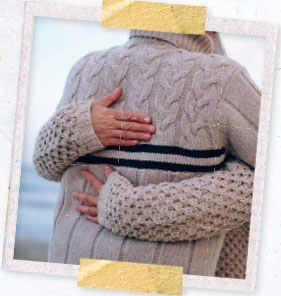
The thing with hygge is that it isnt complicated. It is all about being present in the moment. You know how to hygge already and you dont really need anyone to teach you the basics. You most certainly do not need to buy any stuff to be feeling more hyggelig in your life.
On the other hand, perhaps there is a reason you picked up this book in the first place. Hygge in its purest form is definitely something we are all longing to bring back into our day-to-day lives; to find a way to be present a bit more. Having a word for this in the English language means that we now have more power to consciously make it happen as and when we want to.
This book is a little pocket book about hygge. It is about what hygge is and also what it isnt. The book is filled with a collection of yummy treats to bake at home treats to enjoy together with people you enjoy spending time with, because hygge in its purest form is simply about togetherness and appreciating life. Treats and hygge go together and adding a home-baked cake to the table is a sure-fire way to slow things down, enjoy and just be.
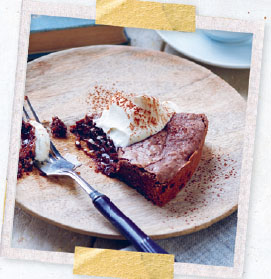
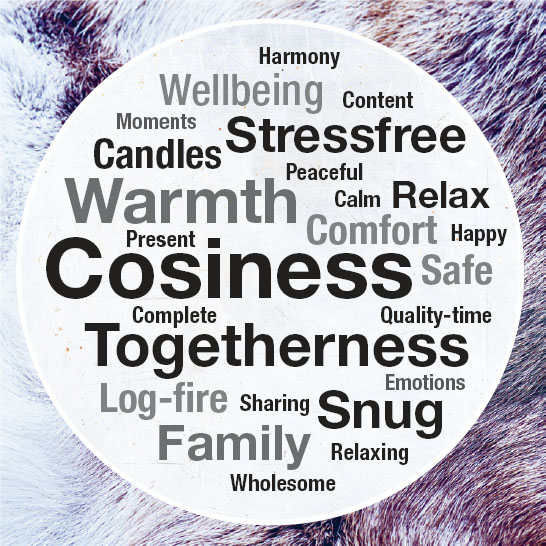

Dont hurry, dont worry, youre only here for a short visit, so sure to smell the flowers along the way.
WALTER HAGEN
THE WORD HYGGE
The word hygge can be traced back to Old Norse, when the Vikings used the verb hyggja, which meant to think and to be satisfied with. The word also has roots in Old English in the word hycgan, which meant to think and to consider.
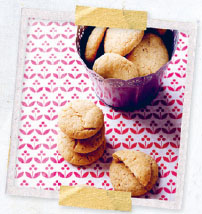
Hygge has been used in Norwegian and Danish for the past few hundred years, and it is widely understood across all of the Nordic countries. While the word is used in Norwegian today, it is used more frequently in the Danish language. A Dane will use the word several times every single day as a verb used to describe seasons and feelings, something ironic or even scary.
The word hug also has connections to the word hygge. Imagine the feeling of hugging someone. You cant genuinely hug someone without giving a bit of yourself and letting go, even if it is just for a moment. That feeling, the split second when two people both relax into a hug, is similar to the feeling of hygge except hygge isnt over in a few seconds, but simply lasts as long as it lasts, with no defined time attached to it.
People often confuse the word hygge with the word cosy. Cosiness, however, is mostly defined and created by physical things around you, whereas hygge is a completely psychological and emotional state.
HOW TO PRONOUNCE HYGGE
who-guh
How you prononounce hygge does depend where you are from, what language you usually speak and how you pronounce the hy sound and the gge sound in your own language. This is a good steer for a British English speaker, less so for a French speaker.
There is a slight variation between the Norwegian and Danish pronunciation of hygge. Few will even pick up on the variation, though, and if you use who-guh, youll be closer than most pronunciation guides of late. One thing is for sure, though it never, ever rhymes with jiggy!
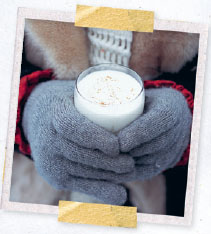
HOW TO USE THE WORD HYGGE
It is natural that when a word is adopted into another language, the use of the word will change over time. Does it matter how you use the word? Not really a language evolves when the words grow and migrate into uses in other cultures. However the word is used outside of the Nordic shores, the correct ways to use it are as follows:
Hygge is a verb
To hygge, with r-added for when you are doing it.

